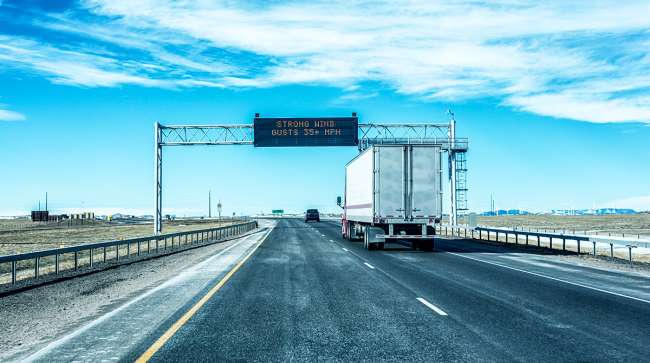Staff Reporter
New Round of BUILD Grants Addresses Freight Corridor Needs

The U.S. Department of Transportation’s first round of Better Utilizing Investments to Leverage Development discretionary grants allocated a record amount of funding for road projects, some of which specifically address important freight routes.
The BUILD grants are meant as a replacement for the Transportation Investment Generating Economic Recovery, or TIGER, program, which was popular with state and local agencies. BUILD grants make $1.5 billion available to support road, bridge, rail, transit and port projects.
Transportation Secretary Elaine Chao announced the recipients Dec. 11 and stated that 69% of the funding in this round has been directed to road projects, a record high for the program.
The Wyoming Department of Transportation was one such winner. WYDOT received $20 million to construct about 5.5 miles of passing lanes and two truck parking areas along a stretch of Interstate 80 in southeastern Wyoming.
.@SecElaineChao, “Over $1 billion of this BUILD funding will be distributed to 60 road projects… About $165 million will go to rail and about $146 million will go to projects to improve America’s ports.” — TransportationGov (@USDOT) December 11, 2018
WYDOT Chief Engineer Shelby Carlson identified I-80, which runs east-west across the southern portion of the state, as Wyoming’s primary freight corridor. Every day, about 11,600 vehicles traverse the stretch of I-80 that is considered in the BUILD grant project. About 52% of those vehicles are trucks. The route is characterized by high elevation and treacherous weather, which can cause accidents and delays.
“We kind of talk that I-80 is almost like a 400-mile mountain pass. We get a lot of snow out there, but our bigger issue on the I-80 corridor is wind. We get a lot of really, really heavy wind,” Carlson told Transport Topics. “To help the trucking industry, we are putting in two climbing lanes on long grades where some trucks tend to slow down and we get kind of balled up and congestion gets tight.”
Carlson said the project is meant to help control spacing and traffic flow when I-80 reopens after weather- and crash-related closures. The portion of the route mapped out in the project sees about seven closures per year, each of which lasts 8-10 hours.
Carlson said the two truck parking areas will contain about 200 parking spots each and will benefit truckers who get stuck because of road closures.
“A lot of our issues on I-80 come from secondary crashes because we get a lot of people held up because of the closure and the minute we open it this large queue of traffic heads out and, a lot of those times, the roads are still slick, the people are in a hurry, they’re trying to get moving and we end up with a secondary crash that closes the road,” Carlson said. “Our hope is, coming out of those parking areas, that we can kind of attenuate the trucks out and try to space them out a little bit better so we don’t just have these huge groups and packs.”
The Minnesota Department of Transportation received $20 million to reconfigure and replace bridges that make up the interchange that links I-35, I-535 and U.S. Route 53, which is colloquially known as the “Can of Worms.” The interchange connects to bridges that stretch to Superior, Wis., and abuts the Port of Duluth-Superior.
Pat Huston, assistant district engineer of major projects for MnDOT, said the agency’s goals for redesigning this interchange are safety, aging infrastructure and freight mobility. He explained that many of the bridges are old and have limited capacity to handle trucks carrying overweight loads, such as turbine blades and boiler vessels, to and from the port.
“The really unique thing is we’re on the first and last mile to the Port of Duluth,” Huston told TT. “[Some loads are] either too heavy, too tall or too long, so they wind up on city streets to get around this interchange.”
St. Tammany Parish, located just across Lake Pontchartrain from New Orleans, won $25 million to widen and rehabilitate about 3.8 miles of I-12, a major east-west route. The grant is part of a larger $36-million project to add lanes and widen shoulders along this portion of the route.
“These resources will go toward critical infrastructure projects in Louisiana that will create jobs and support economic growth. Widening I-12 will eliminate bottlenecks in St. Tammany Parish and improve highway safety,” Sen. Bill Cassidy (R-La.) said in a statement.
Chris Masingill, CEO of the St. Tammany Parish Development District, said the project will improve safety and economic development in the area. He noted that this portion of I-12 had 900 crashes over the past five years.
“This is an important freight corridor for the country,” Massingill told TT. “This grant will absolutely have an immediate impact on efficiency, on safety and on reliability.”


